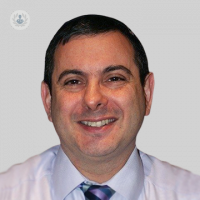Brain tumour surgery: improving survival rates
Autore:Dr Jeremy Rees is a leading neurologist in London who treats neurological problems, brain tumours and other cancers.

We spoke to Dr Rees recently to learn how dangerous gliomas are - a type of tumour that can develop in the glial cells of the spine or brain. We found out how successful brain tumour surgery is and how the results of surgery have improved significantly over the years.
Does brain tumour surgery dramatically improve survival rates?
A shift in surgical practice over last decade towards the earlier removal of slow-growing but ultimately fatal brain tumours, has led to dramatic improvements in survival and seizure control or patients, according to a recent study published by Dr Rees and colleagues from the National Hospital for Neurology and Neurosurgery and UCL Institute of Neurology.
On average patients with low-grade gliomas (LCGs) had 50% chance of dying with 10 years of diagnosis in 2006, fast forward to 2017 and there was just a 4% chance according to an analysis of patient records.
What is the success rate of brain surgery when it comes to seizure control?
The number of patients who did not experience a seizure for 1 year or more after brain surgery went up from 22% in 2006 to 42% in 2017. These patients were eligible to drive again under DVLA rules, helping to boost their independence.
How popular is tumour removal surgery?
In 2017, three times as many patients were undergoing surgery to remove their tumour when compared with 2006. This was because brain surgeons were prepared to operate on more tumours due to advances in scanning and awake surgery.
The improvements we have seen in survival and seizure control have been staggering. It appears that the change in approach when it come to operating earlier has led to a step change in how long patients can expect to live.
How dangerous are gliomas?
Low-grade gliomas (grades I and II) make up around 30% of all gliomas, which are the most common type of primary brain tumour. They usually progress to higher grades (III and IV) which ultimately lead to death.
What is the exact survival rate for patients with low-grade gliomas?
LGGs have an average survival ranging from 5 to 15 years, depending on age and type of tumour. Surgeons traditionally favoured an approach of 'watchful waiting' until the tumour grew - due in part to the risks inherent in surgery. But in the last decade, teams have taken a much more proactive approach to surgery due to better understanding of the risks of watchful waiting and the improvements in surgical imaging and technique. Currently, about 60% of patients with LGG are now offered surgery within a year of diagnosis.
For more information on brain tumour surgery, you may like to book an appointment with a leading neurologist such Dr Jeremy Rees . Visit his Top Doctors profile today.



